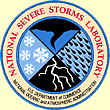Thunderstorms
![]() Thunderstorms can occur anywhere in the world and at any
time of the day. All thunderstorms produce lightning and thunder. Some have
the potential to produce damaging straight-line winds, large hail, heavy rain,
flooding, and tornadoes.
Thunderstorms can occur anywhere in the world and at any
time of the day. All thunderstorms produce lightning and thunder. Some have
the potential to produce damaging straight-line winds, large hail, heavy rain,
flooding, and tornadoes.
A thunderstorm is classified as severe when it contains one or more of the following pheno mena:
- Hail 3/4" or greater
- Winds gusting in excess of 50 knots (57.5 mph)
- A tornado
The Thunderstorm Initiation Mobile Experiment (TIMEx)
MCS Electrification and Polarimetric Radar Study (MEaPRS)
Severe Storms and Tornado Research
Severe Weather Warning Applications and Technology Transfer (SWAT)
SWAT's WSR-88D Mesocyclone and Tornado Signature Case Study Page
Atmospheric Observations
NSSL Education Pages:Thunderstorm FAQ
 Additional Research and Educational Sites:
Additional Research and Educational Sites:
Center for the Analysis and Predictions of Storms
NOAA Severe Storms Spotters Guide presented by the University of Illinois
| Doppler Radar
| Weather Satellites
| Software Development
| Numerical Modeling
|
| Tornadoes | Thunderstorms | Damaging Winds | Lightning | Hail | Winter Weather | Flooding |
| Tornadoes | Thunderstorms | Damaging Winds | Lightning | Hail | Winter Weather | Flooding |
